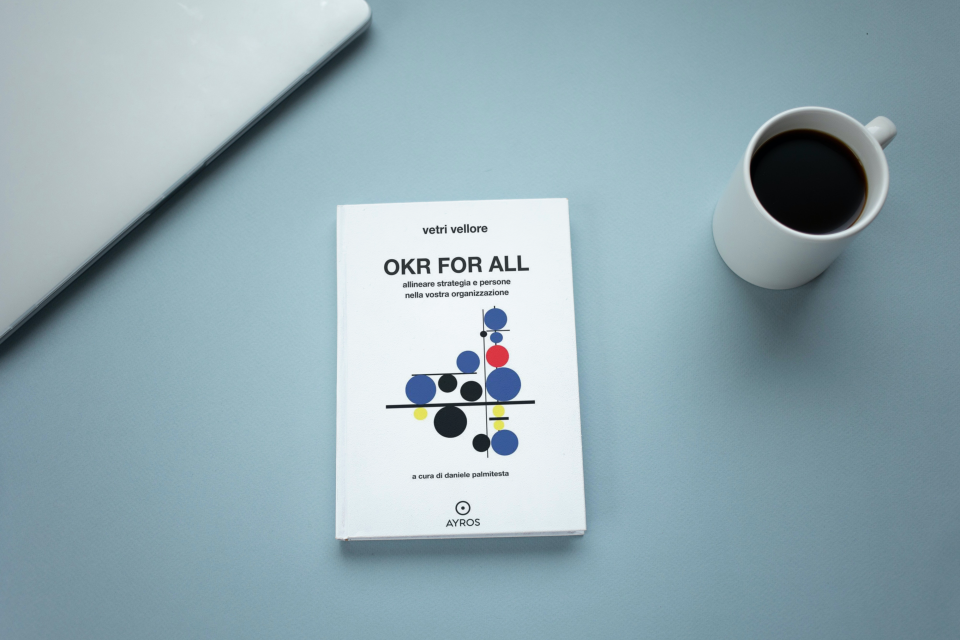Let’s talk about OKRs in the company again: in the previous article we found out together what the key elements of OKRs are and an example of a company case.
In this article I want to explore three aspects in more detail:
- What is the relationship between OKRs and KPIs?
- How does the OKR implementation process work in the company?
- What tool supports the adoption of OKRs?
1. The Meeting of OKRs and KPIs: Insight into the Specificity of OKRs
The comparison between OKRs (Objective and Key Results) and KPIs (Key Performance Indicators) is crucial to fully understand the uniqueness of OKRs in the landscape of management by objectives. Unlike KPIs, which are mainly performance indicators used to measure the effectiveness of an existing activity or process, OKRs aim at setting and achieving specific and ambitious objectives.
While KPIs tend to focus on quantitative aspects and their mission is to be indiscriminate performance indicators, OKRs encourage a more holistic approach, give ‘legs’ to the strategy, have a long time horizon and at the same time want short maintenance routines, oriented towards progress and innovation. In this sense, OKRs not only measure success, but also guide the entire organisation towards new horizons, nurturing with their practice a culture of continuous aspiration and overcoming traditional performance limits.
2. The Rigour of Process in the Implementation of OKRs in the Enterprise
The effectiveness of OKRs lies not only in their definition, but also in the rigour of the process through which they are implemented and managed. This process requires careful planning, a clear definition of responsibilities and continuous evaluation. It is essential to establish a regular feedback loop, where targets are periodically reviewed and adjusted according to progress and challenges.
An example of a feedback cycle:
- very short weekly periodic check (30 minutes) highlighting only difficulties in keeping key results or key initiatives;
- short monthly periodic check (max. 60 minutes) that verifies the progress of the OKRs and the initiatives, with possible corrections, even important ones, if the feedback requires it;
- quarterly closing, learning and even partial rewriting of OKRs.
The review and subsequent evolutionary work will focus on the following observations and dialogues: what did we “love” about the process from the point of view of outcome, methodology and intra- and inter-team relations? The same lenses of observation will also be used for:
- what proved to be unsustainable;
- change hypotheses;
- new, few, essential, steps.
3. The tool to support widespread adoption
The spreading in the organisation and the integration of OKRs into the corporate routine can be supported with the use of dedicated digital tools (e.g. at Rigoni di Asiago, Microsoft Viva Goals is used, also chosen by us at Peoplerise; here is a link to discover others). These help organisations manage and track OKRs, facilitating their adoption and effectiveness in daily use. This is how people in organisations can experience OKRs supported by a tool that facilitates their experience because:
- allows managers and teams to define and assign OKRs in a clear and structured way, ensuring that they are aligned with corporate objectives;
- provides an interactive dashboard where people can easily monitor progress towards OKRs and make decisions;
- integrates with other tools, allowing easy communication and collaboration on OKR progress;
- provides space for discussion and feedback on OKR progress, encouraging team involvement;
- presents in-depth reports on OKRs’ progress, aiding performance evaluation and analysis.
Read more:
Check out Daniele Palmitesta‘s testimonial from Oblics on how to achieve organisational alignment to business strategy effectively, spread among all people thanks to digital, a valuable ally in adopting OKRs. > link
👉 Treat yourself to the OKR FOR ALL book and continue your journey into this fascinating methodology.

